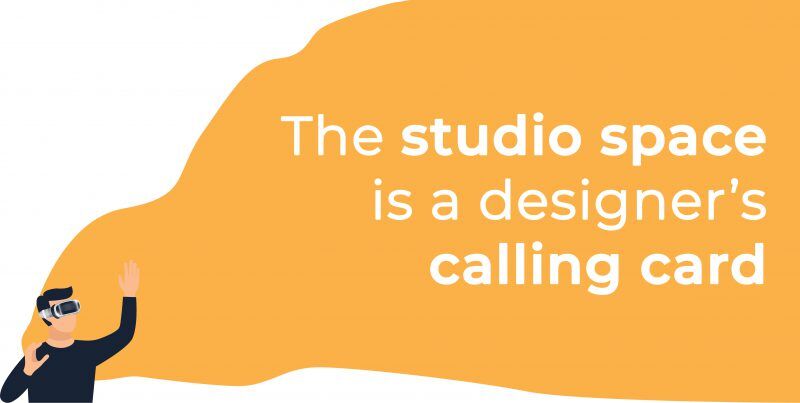Be it a cozy studio for a hands-on team, or one of many workspaces for a multi-city firm, a design studio’s atmosphere influences the way its inhabitants feel, think, act, create and collaborate. To keep pace with shifting employee needs as well as emerging trends across the world, design practices must make the changes necessary to synergize the work they do and the workspace they inhabit. After all, the studio space is increasingly becoming synonymous with the designer’s calling card.
It is this vision that we sought to realize at the India Design ID earlier this year, the country’s foremost luxury design week. Collaborating with HP and Intel, we presented our vision of a collaborative and futuristic workspace for architects and designers – an agile, forward-thinking studio for the design practices of tomorrow, as much a space to create as it is a place to inspire.
This, of course, is not a mere blast to the past: as the world reels from the impact of lockdowns and self-imposed quarantines to contain Covid-19, a pandemic of unprecedented proportions, we are taking this time to look back at what was an exciting technological proposition that has now become a critical need of the hour. Running in tandem with HP’s Office Of The Future campaign, we conceptualized the Studio Of The Future – powered primarily by Immersive Technology. This studio was designed to transport users to 2048 – which, by the way, shares the calendar with 2020 – a time when virtual workspaces would undoubtedly be ubiquitous and immersive visualization of data would be mainstream; indeed, it will be the norm. But even as we foresaw a trend towards cutting-edge tools for design collaboration and communication, we tried keeping step with the organizational structures and setups that have made studios tick for decades – the booth, consequently, comprised an office for the chief architect, and a traditional collaboration space. The real departure was introduced by the zone dedicated to design and experience in VR.
While HP and Intel exhibited their hardware solutions, Trezi provided the software platform; primarily on display were Trezi 1.11 software for desktops and HMDs, the HP Reverb VR headset, and the Z-series workstations by HP, among others. In the four days of the exhibition, we had the pleasure of interacting with over 350 visitors from across the country, including the likes of prominent Indian architects like Sanjay Puri (who we also have the privilege to call one of our earliest adopters), Naresh Narsimhan, and Sonali Bhagwati, academicians and design innovators such as Lily Tandon of JS Institute of Design and Sushant Verma (Founder, ratLAB), and stakeholders in leading building manufacturer companies, such as Furdaus Variava (VC, Bharat Floorings), among others.
Of course, much has changed since then – what we once predicted as being the part and parcel of every project site and architect’s office might as well become a domestic staple, our bridge to a world that is just as connected as it is fragile. Coronavirus has reminded us that so much of what we take for granted – the ability to step into a space, enjoy visual as well as tactile exploration, and ideate, design and explore with unfettered ease – are nowhere near as inviolable as we thought. The times we live in are uncertain but are also eye-opening. We know that work must go on as before, and Virtual Reality – which Ar. Puri described as ‘an amazing tool that physically transports the user to the [project] space’ – can help us parse the distance from the safety of our homes.
We have talked at length about how the building industry needs disruption to break us out of our counter-productive patterns of favouring variable interpretation of data over consistent visualization. But disruption need not be led solely by carefully planned timelines of global tech giants – it is within our reach if we identify the need of the hour and make required efforts to close the gap. For us, this has come in the form of realizing that 2048 is far too distant in the future to think of making the change – the time to go virtual is now.
What does disruption look like to you? Do share your perspective because, together, we will build a new future.
To experience a free 14-day trial using your own SteamVR-compatible Virtual Reality kit, please sign up here.
Or contact us to organize a demo at your office – our sales representative will set up an appointment at your convenience.












